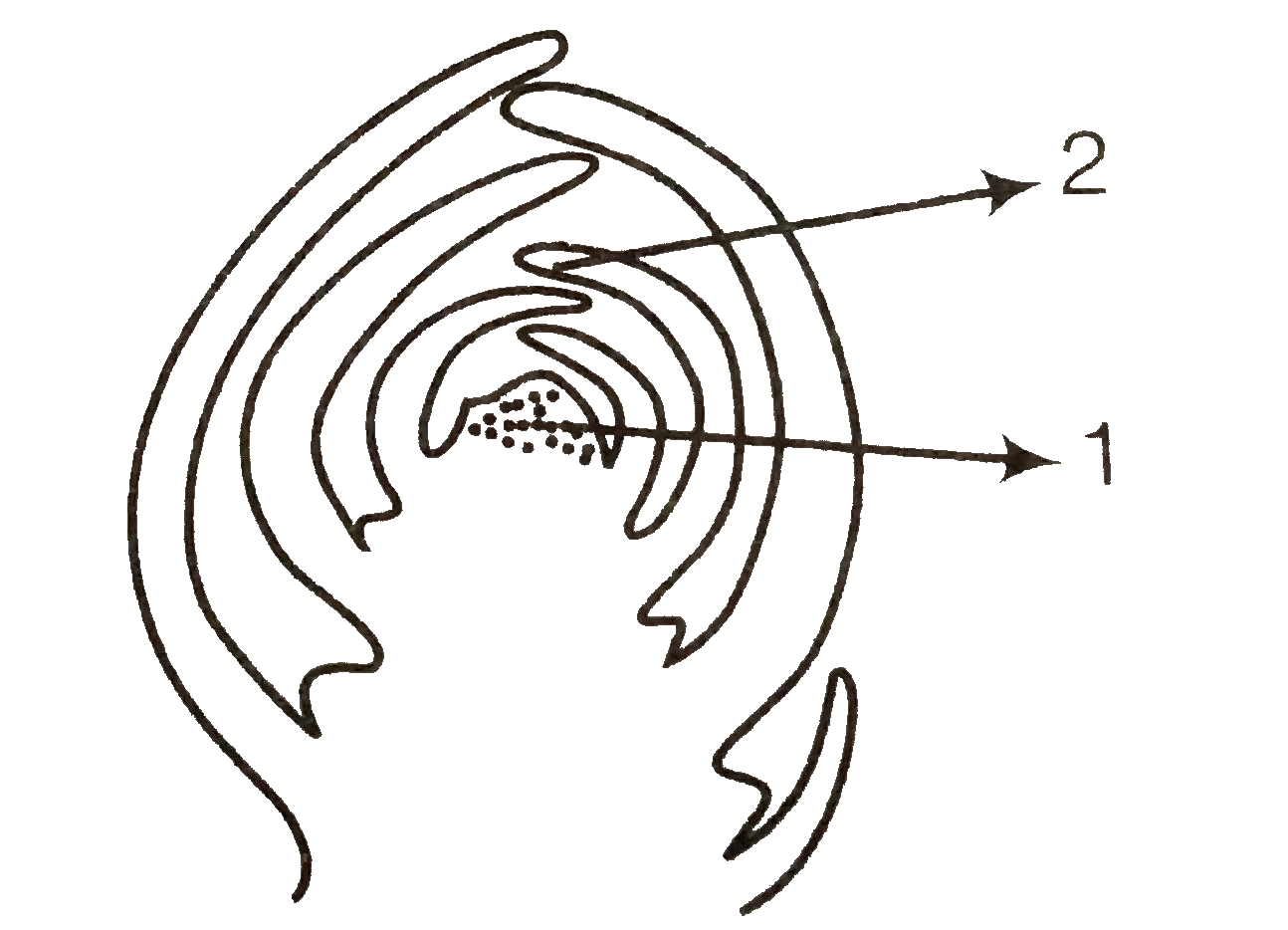A dicotyledonous plant forms crown gall when
Agrobacterium tumefaciens comes in contact with the plant
Agrobacterium rhizogenes comes in contact with the plant
A specific part of DNA from the Ti plasmid gets integrated with the plant chromosome
A specific part from the Ri plasmid gets integrated with the plant chromosome
The correct Answer is:C
To solve the question "A dicotyledonous plant forms crown gall when," we need to analyze the options provided and understand the process involved in crown gall formation.
1. Understanding Crown Gall Disease: Crown gall is a plant disease characterized by the formation of tumors, primarily caused by the bacterium *Agrobacterium tumefaciens*. This bacterium is known for its ability to transfer genetic material to plant cells.
2. Identifying the Bacterium: Among the options, we need to identify which bacterium is responsible for crown gall disease. The correct bacterium is *Agrobacterium tumefaciens*, which contains a specific plasmid known as the Ti plasmid (tumor-inducing plasmid).
3. Role of Ti Plasmid: The Ti plasmid carries genes that are responsible for the formation of tumors in plants. When *Agrobacterium tumefaciens* comes into contact with a plant, a specific part of the Ti plasmid's DNA (known as T-DNA) is transferred and integrated into the plant's genome.
4. Integration into Plant Genome: The integration of T-DNA into the plant chromosomes is crucial for the development of crown gall. This integration leads to the expression of genes that promote uncontrolled cell division, resulting in tumor formation.
5. Evaluating the Options:
- Option A: "Agrobacterium tumefaciens comes in contact with the plant" - This is partially correct, but it is the integration of the Ti plasmid that is essential.
- Option B: "Agrobacterium rhizocenes comes in contact with the plant" - This is incorrect as *Agrobacterium rhizocenes* is not involved in crown gall formation.
- Option C: "A specific part of DNA from Ti plasmids gets integrated with the plant chromosomes" - This is correct as it describes the mechanism of crown gall formation accurately.
- Option D: "A specific part from Ri plasmids get integrated with the plant chromosomes" - This is incorrect as Ri plasmids are not involved in crown gall disease.
6. Conclusion: The correct answer is Option C: "A specific part of DNA from Ti plasmids gets integrated with the plant chromosomes."
- Option A: "Agrobacterium tumefaciens comes in contact with the plant" - This is partially correct, but it is the integration of the Ti plasmid that is essential.
- Option B: "Agrobacterium rhizocenes comes in contact with the plant" - This is incorrect as *Agrobacterium rhizocenes* is not involved in crown gall formation.
- Option C: "A specific part of DNA from Ti plasmids gets integrated with the plant chromosomes" - This is correct as it describes the mechanism of crown gall formation accurately.
- Option D: "A specific part from Ri plasmids get integrated with the plant chromosomes" - This is incorrect as Ri plasmids are not involved in crown gall disease.
Topper's Solved these Questions
- PRINCIPLES AND APPLICATIONS OF BIOTECHNOLOGYBOOK - DINESH PUBLICATION ENGLISHCHAPTER - PRINCIPLES AND APPLICATIONS OF BIOTECHNOLOGYEXERCISE - CYG
10 Videos
- PRINCIPLES AND APPLICATIONS OF BIOTECHNOLOGYBOOK - DINESH PUBLICATION ENGLISHCHAPTER - PRINCIPLES AND APPLICATIONS OF BIOTECHNOLOGYEXERCISE - Brain Teasers
5 Videos
- PRINCIPLES AND APPLICATIONS OF BIOTECHNOLOGYBOOK - DINESH PUBLICATION ENGLISHCHAPTER - PRINCIPLES AND APPLICATIONS OF BIOTECHNOLOGYEXERCISE - Brain Teasers
5 Videos
- PLATYHELMINTHES-THE FLAT WORMSBOOK - DINESH PUBLICATION ENGLISHCHAPTER - PLATYHELMINTHES-THE FLAT WORMSEXERCISE - check your grasp
9 Videos
- REPRODUCTION IN ORGANISMSBOOK - DINESH PUBLICATION ENGLISHCHAPTER - REPRODUCTION IN ORGANISMSEXERCISE - Check Your Grasp
19 Videos
Similar Questions
Knowledge Check
A dicotyledonous plant bears flowers but never produces fruits and seeds. The most probable cause for the above situation is
Aplant is dioecious ad bears only pistillate flowersBplant is dioecious and bears both pistillate and staminate flowersCplant is monoeciousDplant is dioecious and bears only staminate flowers.
A dicotyledonous plant bears flowers but never produces fruits and seeds. The most probable cause for the above situation is
View SolutionLabel the diagram
A.This is which part of a dicotyledonous plants?
B. If wer remove part 1 from the plant , what will happen?

View SolutionDifferentiate between Vascular bundles in the stem of dicotyledonous plants and monocotyledonous plants
View SolutionLeaf of dicotyledonous plants possess ….. Venation, while ….. Venation is the characteristic of most monocotyledons.
View SolutionExine and pollen tubes of pollen grains of dicotyledonous plants are respectively made up of
View Solutionname the meristems which appear later in life of dicotyledonous and gymnosperms plants and causes increase in the girth of the organ in which they are active.
View SolutionIn A–– of the dicotyledonous plants , the B–– elongation of the radicle leads to the formation of C––. Choose the correct option.
View Solution
